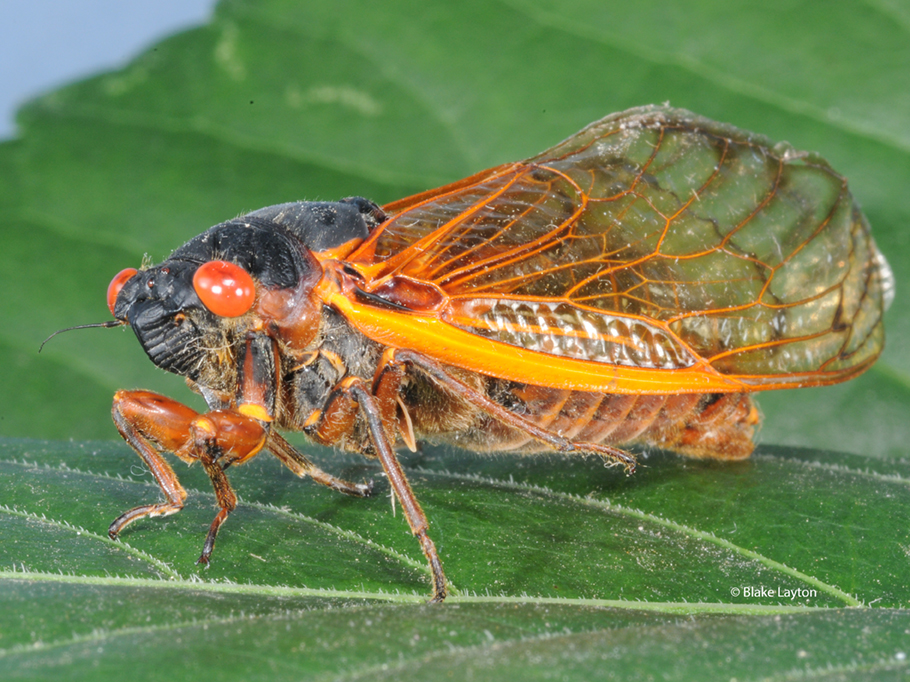Periodical Cicadas, Vol. 10, No. 03
Related News
June 24, 2013
June 20, 2013
April 11, 2013
April 2, 2013

What’s making all that noise up in the trees? Depending on where you live in the state, it could be periodical cicadas. Periodical cicadas are an amazing natural phenomenon that only occurs in the Eastern United States. This spring, seventeen Mississippi counties, along with portions of fourteen other states, will experience an emergence of 13-year cicadas. This is periodical cicada Brood XIX, also known as the Great Southern Brood. Although affected by weather conditions, emergence will likely begin around the end of April, and activity will extend through most of May.
For the past 13 years the nymphs have been feeding quietly underground on the roots of hardwood trees, but this spring they will emerge through ½ inch diameter holes, shed their nymphal skins, and become adults to mate and lay eggs. Adults only live a few weeks, but the males make a lot of noise as they sing to attract mates. A single male can sing pretty loud, but population densities can exceed one-half million cicadas per acre, and the combined songs of this many cicadas can drown out backyard conversations.
Periodical cicadas are easy to distinguish from the green-colored annual cicadas we see every year. They are black with striking red eyes and orange wings. Although they look a lot alike, there are really four species of periodical cicadas in this brood, but they all emerge on the same 13-year schedule. We have trouble spotting the differences, but the cicadas don’t. Males and females distinguish among species by differences in songs and other behavioral traits.
You may have heard of 17-year cicadas. These occur farther north, but their appearance and behavior are similar. Today there are 12 broods of 17-year cicadas (some have gone extinct), but only 3 broods of 13-year cicadas. Mississippi is the only state in which all three 13-year broods occur.
Despite their red, orange, and black coloration, which often signals danger in nature, periodical cicadas are harmless, but they do cause an unusual type of damage to fruit and ornamental trees. The females lay their eggs in pencil-sized twigs of hardwood trees and these egg-laying scars can cause twigs to break, leaving eight-to-twelve-inch sections of broken brown twigs hanging in trees. This twig-flagging can be extensive and can adversely affect growth and yield of affected fruit trees. Fortunately, this problem only occurs at 13-year intervals. Covering susceptible trees with insect-proof netting before cicadas begin laying eggs is the only effective “treatment” for small backyard trees.
See Distribution of Periodical Cicadas in Mississippi for maps showing Mississippi counties where periodical cicadas emerged during the last brood cycles: 2011, 2014 and 2015, and are expected to emerge again in 2024, 2027, and 2028.
See Periodical Cicadas to Emerge Soon for more information on this year’s emergence of Brood XIX. To learn even more about cicadas, including the many species of annual cicadas we have in the state, check out the Cicada Mania web site
Blake Layton, Extension Entomology Specialist, Mississippi State University Extension Service.
The information given here is for educational purposes only. Always read and follow current label directions. Specific commercial products are mentioned as examples only and reference to specific products or trade names is made with the understanding that no discrimination is intended to other products that may also be suitable and appropriately labeled.
Bug’s Eye View is now on Facebook. Join the Bug's Eye View Facebook group here.